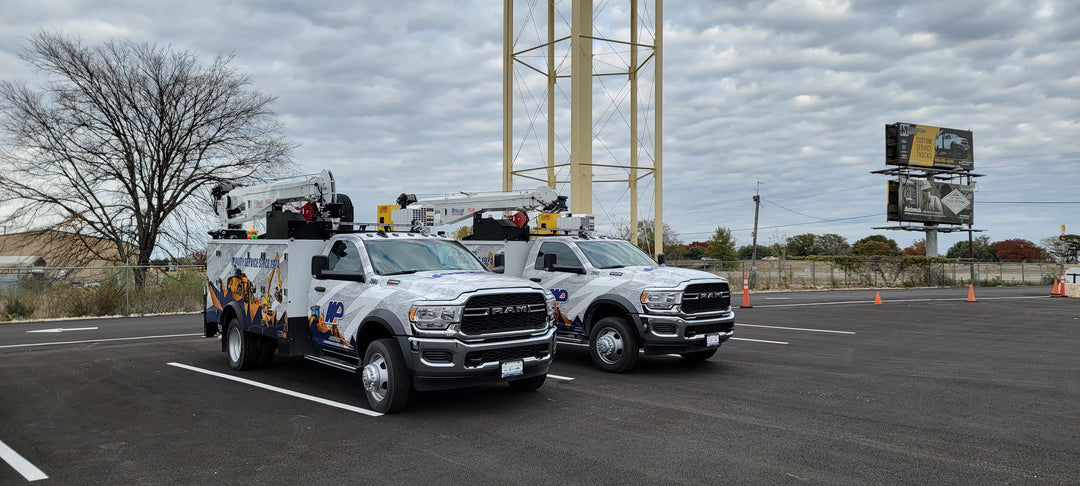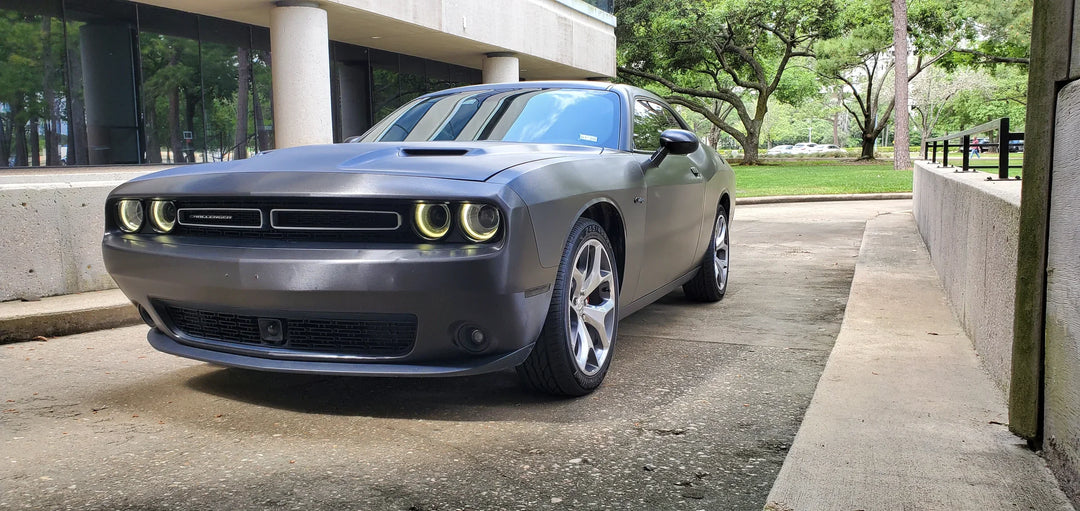The History and Evolution of PPF (Paint Protection Film)
Paint Protection Film, commonly known as PPF or clear bra, has become a must-have upgrade for vehicle owners who want to preserve their paint and protect their investment. While today’s PPF is sleek, self-healing, and virtually invisible, its origins are rooted in military applications. Over the decades, PPF has evolved dramatically—both in material science and installation technology.
At The Wrap Empire in Houston, Texas, we specialize in premium PPF installation for Teslas, luxury vehicles, exotic cars, and performance builds. In this article, we take a detailed look at the history and evolution of paint protection film, including where it started, how it has changed, and why it’s now one of the most essential services for discerning car owners.
If you’re considering protecting your vehicle with PPF, understanding its origins and development can give you valuable insight into the quality and technology behind the film that protects your paint.
Where It All Began: PPF’s Military Origins
PPF was not originally created for the automotive industry. In fact, its earliest use dates back to the Vietnam War era. The U.S. military needed a durable, lightweight material that could protect helicopter rotor blades and other sensitive surfaces from flying debris, dust, and shrapnel.
3M, already a pioneer in adhesive and film technologies, developed the first versions of what would later become paint protection film. These early versions of PPF were thick, opaque, and designed for function over form. Their job was to shield key components on military helicopters and vehicles—not to look aesthetically pleasing.
This military-grade protective film proved incredibly effective. It was tough, resistant to tearing, and easy to replace. After its success in combat zones, engineers and manufacturers began to see the potential for its use in other industries—particularly in automotive applications.
Transitioning to Automotive Use
In the 1980s and 1990s, the automotive industry began experimenting with PPF, especially for motorsports and off-road racing. Rally teams and endurance racers used early iterations of clear bra to protect their high-performance vehicles from gravel, track debris, and contact with other cars.
However, these early films had limitations. They were difficult to apply, prone to yellowing over time, and often required trimming by hand, which posed risks to the underlying paint. Installers needed extensive skill to fit the film to the vehicle’s complex curves and body panels.
As consumer demand for automotive protection grew, manufacturers started refining their formulations. The goal was to develop a film that was clearer, thinner, easier to apply, and long-lasting. This marked the beginning of a new era for PPF.
The 2000s: PPF Goes Mainstream
By the early 2000s, PPF was no longer reserved for race cars and military equipment. Luxury car owners, exotic car enthusiasts, and high-mileage commuters began seeking out clear bra solutions to protect their factory paint from chips, scratches, and environmental damage.
This is when leading brands like XPEL, SunTek, and 3M began to innovate rapidly. They introduced thinner films with better clarity and added topcoats that resisted staining and yellowing. Installation methods also improved with the introduction of plotter-cut patterns based on vehicle-specific templates. This allowed for faster, safer installations without the need to trim the film directly on the paint.
These advancements made PPF more accessible and attractive to the average consumer. Clear bra services began appearing in professional detailing studios, auto dealerships, and wrap shops. Customers began to see PPF not just as a protective layer but as an essential part of maintaining their vehicle’s value.
The 2010s: The Rise of Self-Healing Technology
One of the most significant breakthroughs in PPF evolution came in the 2010s with the introduction of self-healing films. These films contained elastomeric polymers that responded to heat—either from sunlight or warm water—by removing surface-level scratches and swirl marks.
This self-healing capability marked a turning point for the industry. PPF was no longer just a static barrier; it became an active form of protection that could repair itself over time. This innovation dramatically improved the long-term appearance of protected vehicles and further solidified PPF’s place in the automotive aftermarket.
During this decade, manufacturers also introduced hydrophobic topcoats, similar to ceramic coatings, which allowed PPF to repel water, dirt, and contaminants. This combination of durability, self-healing, and gloss enhancement made modern PPF an all-in-one solution for vehicle protection and aesthetics.
PPF Today: Advanced Protection for Every Vehicle
In 2024, paint protection film has reached a level of refinement that makes it suitable for nearly every type of vehicle, from brand-new Teslas and luxury SUVs to classic muscle cars and daily commuters. Modern PPF is:
-
Crystal clear and virtually invisible
-
Available in gloss, satin, and even matte finishes
-
Capable of self-healing minor scratches
-
Resistant to UV rays, chemical stains, and environmental pollutants
-
Designed with precision-cut templates for seamless fitment
With manufacturers like XPEL, 3M, and STEK pushing the boundaries of material science, the quality and longevity of today’s PPF are better than ever. At The Wrap Empire, we use only top-tier films that offer long-term protection backed by industry-leading warranties.
The Future of PPF
The evolution of paint protection film is far from over. As technology continues to advance, we are likely to see even more improvements in film clarity, thickness customization, and multi-layer protection.
Here are some trends and innovations to watch for:
-
Smart PPF with embedded sensors or color-changing capabilities
-
Thinner, more flexible films that are easier to install on complex curves
-
Improved heat rejection properties, allowing PPF to function as a thermal shield
-
Eco-friendly formulations with biodegradable or recyclable components
These advances will continue to push the limits of what PPF can do—not just in automotive applications, but possibly in marine, aviation, and even consumer electronics.
Why PPF Is More Relevant Than Ever in Houston
Houston is one of the largest and most diverse car markets in the United States. With intense sunlight, high humidity, unpredictable weather, and miles of freeway driving, it’s also one of the toughest environments for a vehicle’s paint.
PPF is particularly valuable in Houston for several reasons:
-
Protection against rock chips on I-10, Beltway 8, and Highway 290
-
UV resistance to prevent fading in Texas heat
-
Defense against bug splatter, road salt, and hard water stains
-
Preservation of resale value in a competitive market
At The Wrap Empire, we serve customers across the Houston metro area who are serious about protecting their investment. Whether you drive a new Porsche, a Model Y, or a custom pickup, our team ensures the film is applied with precision and care.
How The Wrap Empire Delivers Industry-Leading PPF Installations
Our reputation as Houston’s wrap and protection specialists is built on high-quality work and a customer-first approach. When you choose The Wrap Empire for PPF, you get:
-
Certified installers with deep expertise in exotic and luxury vehicles
-
Plotter-cut PPF using the latest vehicle-specific templates
-
Seamless edge wrapping and paint-safe installation methods
-
Climate-controlled indoor installation environment
-
Top-tier films from trusted brands like 3M, XPEL, and STEK
We offer a range of protection packages including partial front, full front, and full-body PPF installations, depending on your driving habits and vehicle type.
Final Thoughts
Paint Protection Film has come a long way from its roots in military helicopters to its place today as a must-have solution for automotive preservation. Its evolution reflects decades of innovation in materials, manufacturing, and application techniques.
For Houston drivers who want their vehicles to maintain a showroom finish, PPF offers unmatched protection against real-world hazards like rock chips, sun damage, and chemical stains. At The Wrap Empire, we bring the latest PPF technology to your vehicle with craftsmanship, precision, and attention to detail.
If you want your car to look its best for years to come, there’s no better investment than professional paint protection film.




